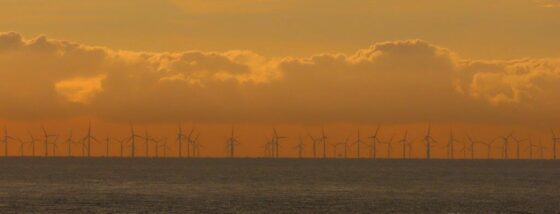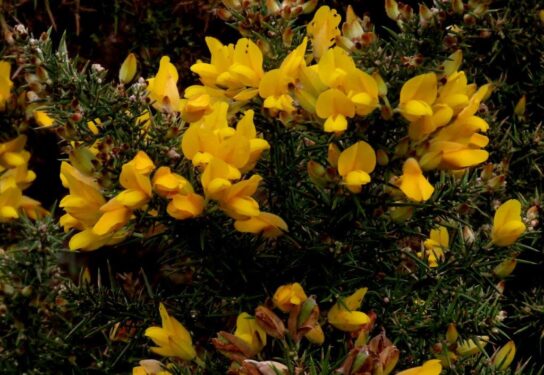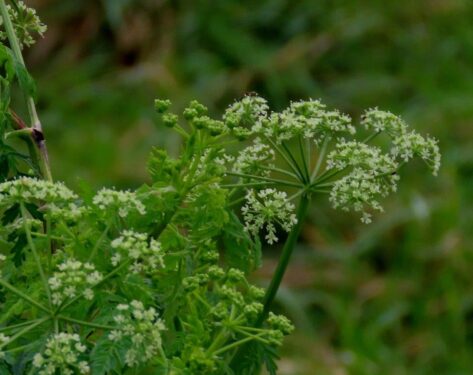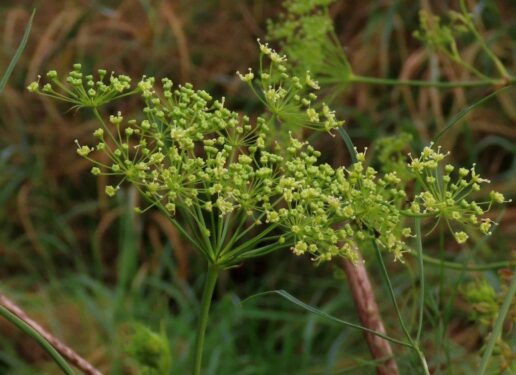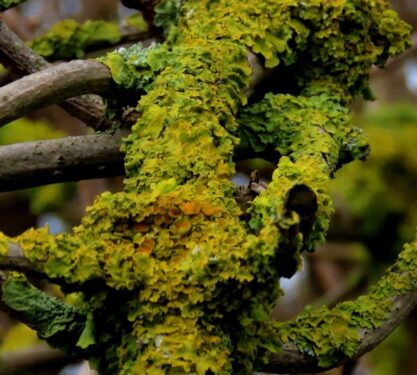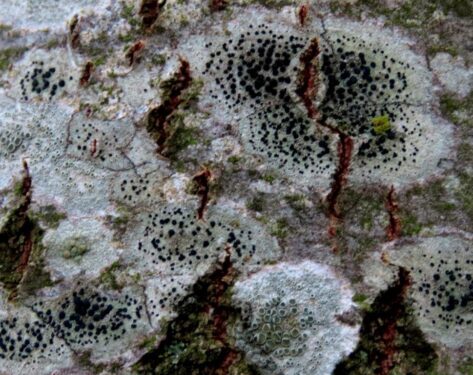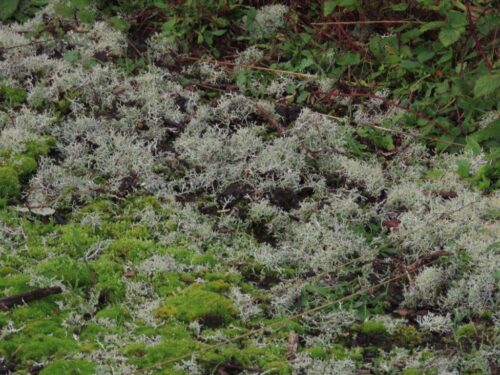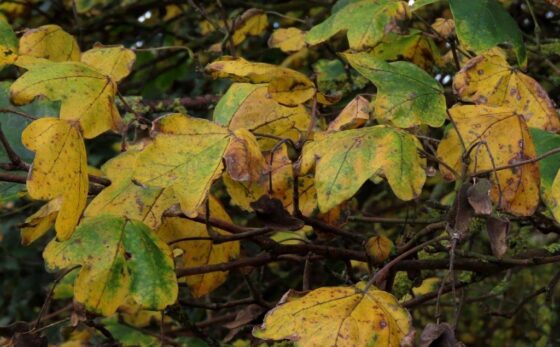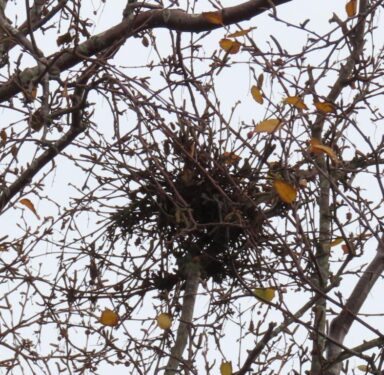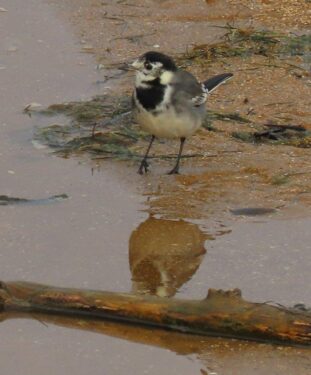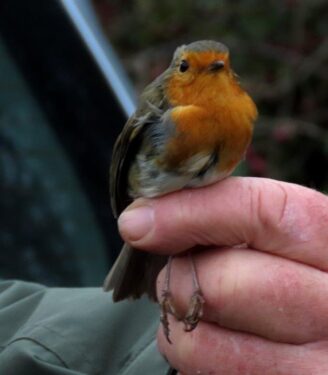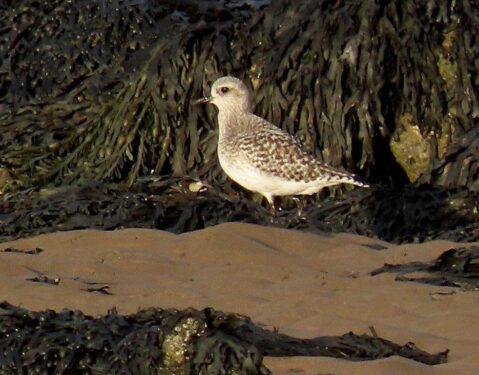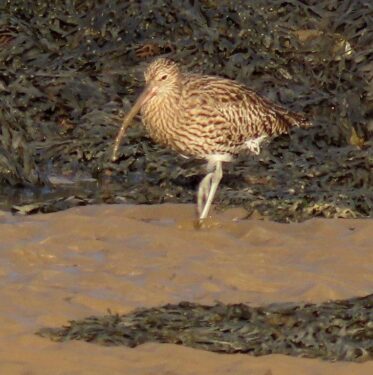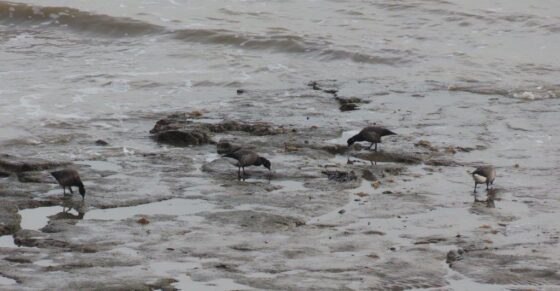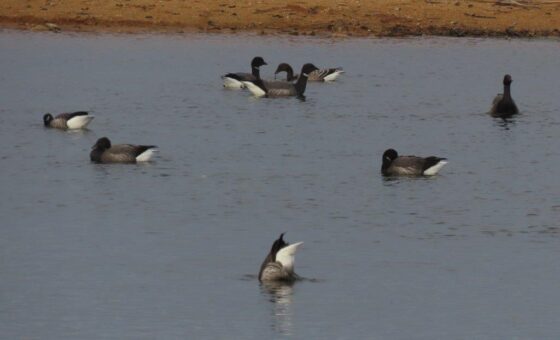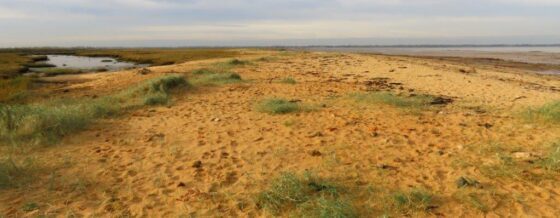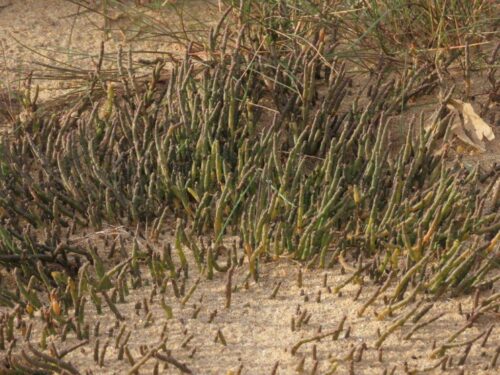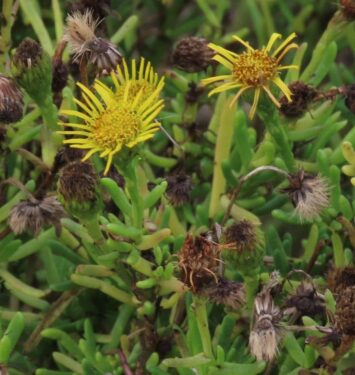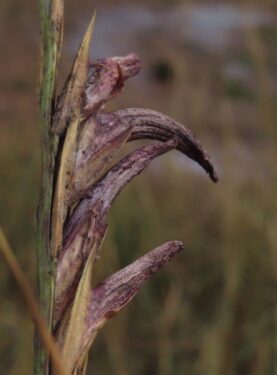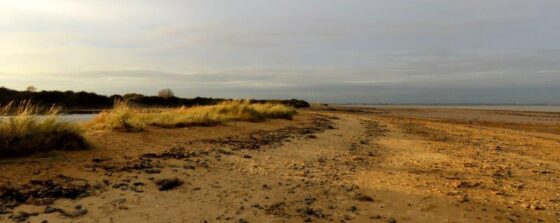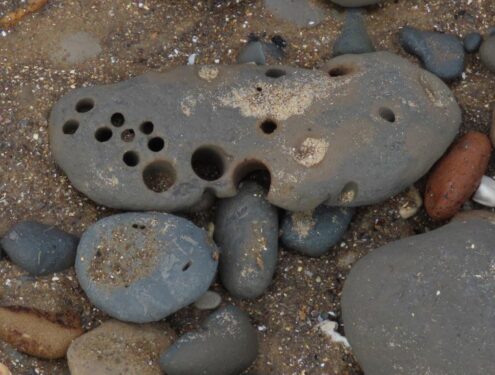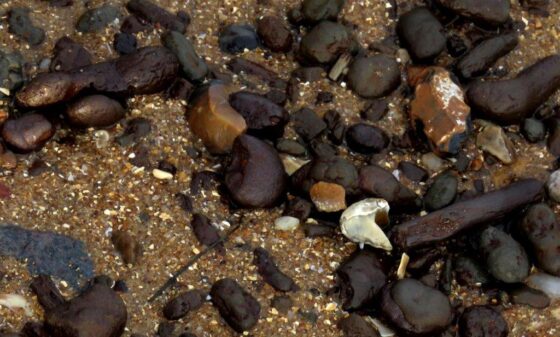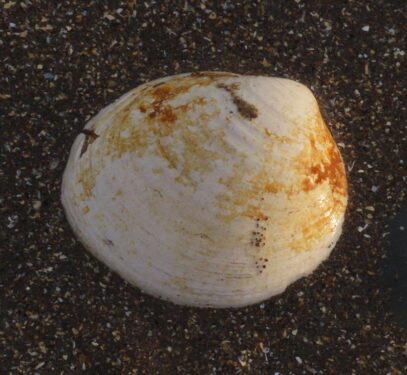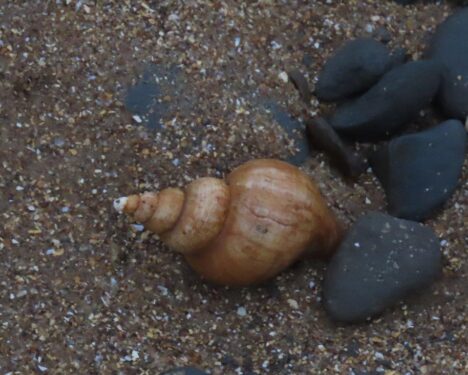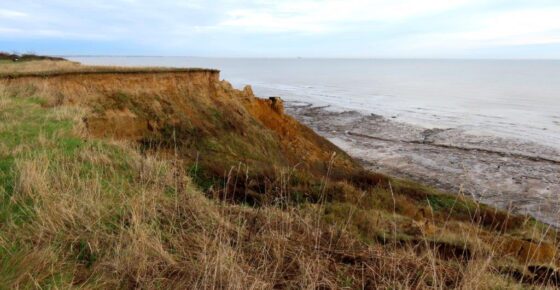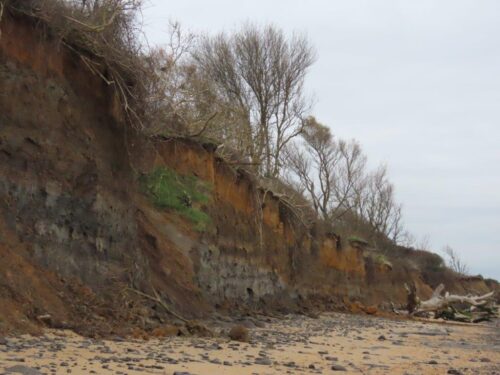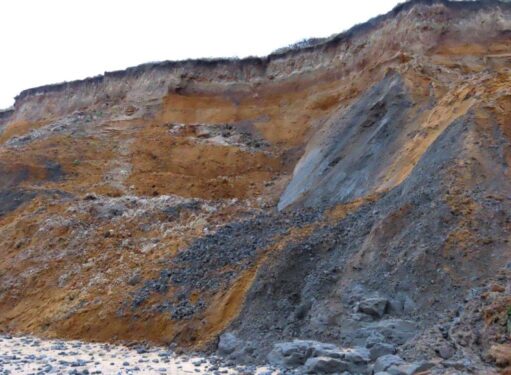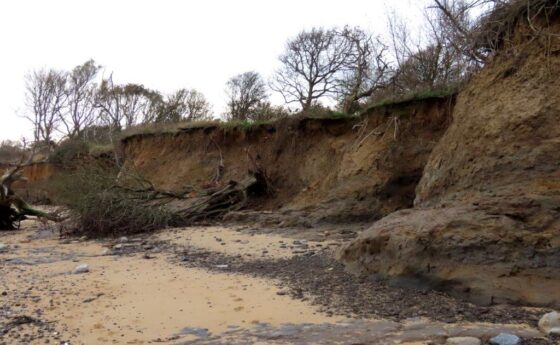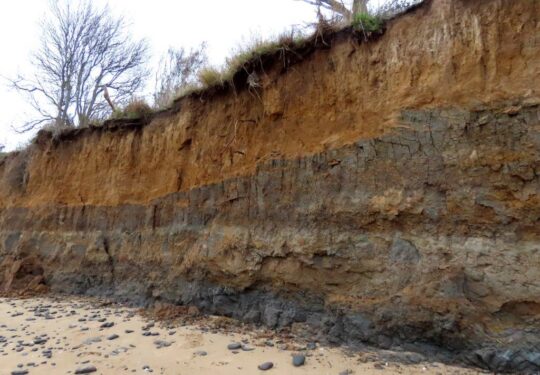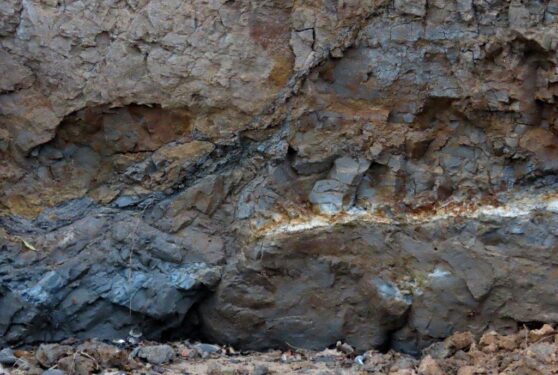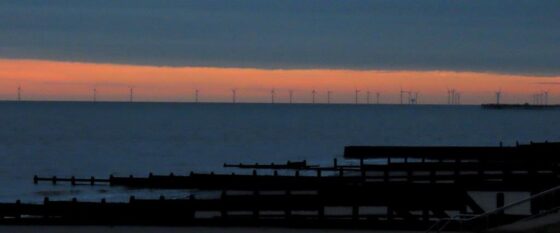The day dawned still and with a glimmer of hope in the eastern skies, although actually for most of the time it remained stubbornly grey and for a while a keen cool breeze sprang up, making us thankful for additional layers! But generally it was mild for the time of the year, and even warm enough for the newly blooming gorse to be giving out its alluring coconut scent.
A few more plants still in flower, and attracting the interest of flies at least, included Yarrow, Sea Mayweed, Hemlock and our local rarity, Hog’s Fennel.
Otherwise it was left to the lichens to add colour and form to the barkscapes and rewilding concrete tracks….
….along with Field Maple in autumn colour and Birch tops adorned with the knots of Taphrina fungal witches’-brooms.
Small birds were relatively few and far between , just a few Long-tailed Tits, Pied Wagtails, Meadow Pipits and Goldfinches, with singing Robins, migrating Skylarks and Starlings, and a remarkable number – at least ten – Cetti’s Warblers, of course heard not seen. But then evidence that there were more birds around than at first apparent: we chanced upon the two local ringers, Simon and Pat Cox, who were happy gives us an impromptu demonstration with a Robin and a Wren, and regale us with tales of their riches from earlier in the day.
Down at the shore, there were plenty of waders, including Grey Plovers and Curlews, and everywhere, in the air, grazing on the clay and upending in the lagoons, burbling bands of Brent Geese.
The salt marshes have largely descended into their winter brown, save for a few Golden-samphires still lighting up the scene, and exciting the nostrils with their shoe-polish aroma. Also on the marshes, we spotted several spreading plants of the very scarce Perennial Glasswort, and stands of Cord-grass, their flower-heads almost wholly infested with the fruiting bodies of Cord-grass Ergot. Seemingly increasing every year, will this parasite prove to be the nemesis of its rather aggressively spreading host?
A stroll back along the beach then gave plenty of opportunity for beachcombing, from Piddocks and their borings, Slipper-limpets and Portuguese Oyster shells among many other New Kids on the Block, intermixed with Dog-cockles and Left-handed Whelks from the 3 million year-old Red Crag, and pyritized wood and copperas nodules from the 50 million year-old London Clay.
As the light started to fade, after a recent spate of erosion, the cliffs from below revealed vivid tales of our cataclysmic past: inundation by sea water and passage of a prehistoric Thames; upheaval of the land from continents colliding, buckling and faulting; ash-clouds from Scottish volcanoes; and dust-clouds from the icy plains of glacial East Anglia.
And finally, a sunset, by some trick of the cloudscape in exactly the same place on the horizon as the sunrise eight hours’ previously. A fine end to another great day out with Naturetrek.
